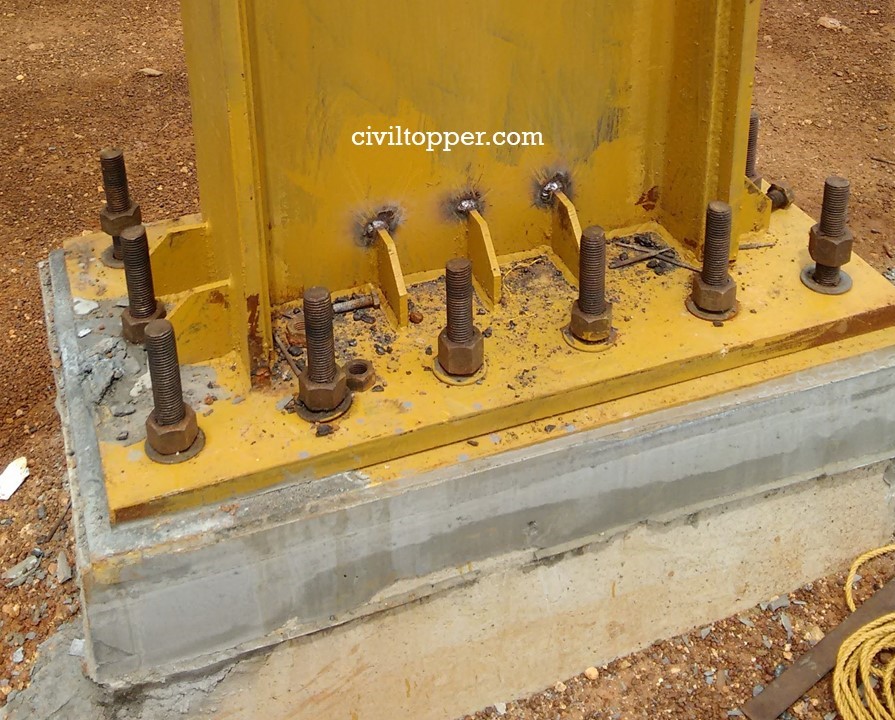For transmitting the load from columns to their foundations, we use baseplates. A designed steel plate needs to be welded at the bottom of the steel column. The size and thickness of the base plate are designed in a way that the intensity of load distributed is less than the bearing capacity of the concrete pedestal or concrete foundation. The design of the base plate is most important in the design of steel structures.
These base plate and foundation bolts transfer the load from the column to the RCC columns or pedestals. The axial load or compressive load from the steel column to the RCC pedestal is carried through the baseplate. The moments are carried through foundation bolts. Foundation bolts may also be called Anchor bolts.
In the construction site, the foundation bolts are placed on a pedestal with the help of a baseplate template. A template is nothing but a baseplate which thickness is minimal and is used for only marking purposes. Let’s find out the way for the marking using 9 points technique.

Considering the above image as a reference, take the 4 corner points of the pedestal and 4 corner points of the baseplate and center for both. If you check these 9 points while placing the foundation bolts, you will get 100% accuracy in column positions.
